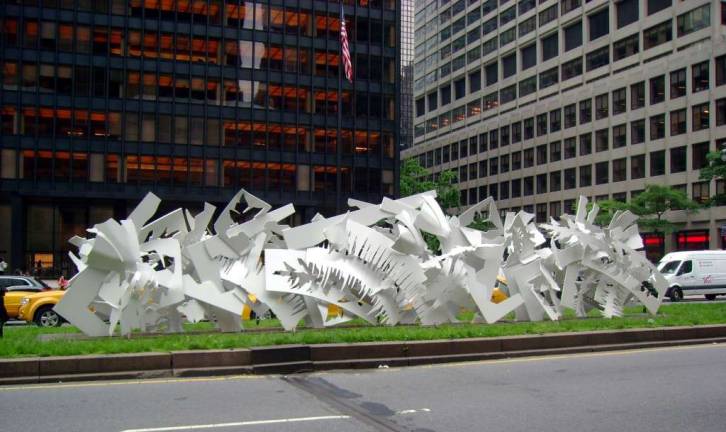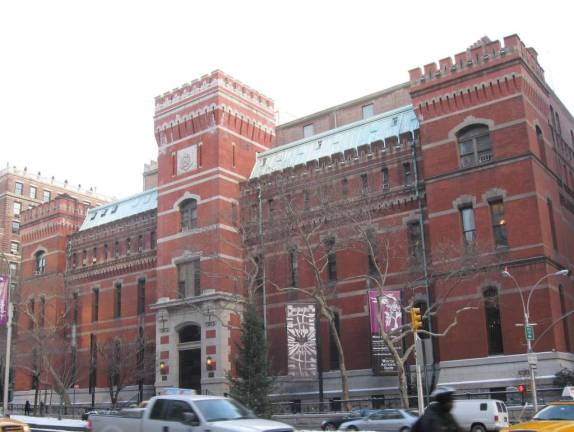Post-Bloomberg Arts Funding Remains a Giant Question Mark


Bloomberg to end $34 million Arts Advancement Initiative this year
Mayor Michael R. Bloomberg is the 13th richest person in the world. And come this November, when he leaves office, the cash probably won't be flowing as freely into the greatest city in the world.
It's especially a scramble for the 245 arts organizations throughout the city that have benefitted under Bloomberg's Arts Advancement Initiative as part of Bloomberg Philanthropies, which has poured $34 million into the arts over the past two years. The initiative is set to end this year. So for arts organizations like Park Avenue Armory on the Upper East Side and Symphony Space on the Upper West Side, the future of not only the Department of Cultural Affairs (which will also be getting a new commissioner to replace Kate Levin this fall), but also Bloomberg as a private, wealthy donor, hangs in the balance.
"No one really knows what's going to happen," said Mark Rossier, deputy director of New York Foundation for the Arts, an organization that had been receiving $100,000 per year from Bloomberg. "I know that Bloomberg Philanthropies is re-evaluating what they are doing moving forward. We've learned never to rely fully on one grant. Everything is always in flux."
Bloomberg Philanthropies refused to comment on the record for the story.
The question on everyone's mind is whether or not Bloomberg will turn his full attention away from New York, because now that he is not mayor, Bloomberg can spread his wealth more nationally, or even globally. Despite the questions, Bloomberg Philanthropies is still churning out funds for New York's arts. The organization just donated $15 million to launch a series of interactive apps for several of New York's museums, including MOMA, the Met Museum and New York Botanical Gardens.
Under Mayor Bloomberg, the NYC Department of Cultural Affairs has a budget, on average, of $150 million per year, which has been roughly the same amount that his predecessors Giuliani and Dinkins spent on the arts, according to the New York Times. According to their web site, the Department of Cultural Affairs is the largest cultural funding agency in the nation, and has a capitol budget of $685 million for the next four years. But focus on the arts in New York actually grew during Ed Koch's mayoral administration in the 1980s, and leveled off in the late 80s.
Bloomberg the private philanthropist has been much more notable in the minds of arts organizations. Even before The Arts Advancement Initiative, Hundreds of small to mid-sized arts organizations throughout the city had been receiving money from Bloomberg anonymously through Carnegie Corporation, a philanthropic trust. Since 2002, the corporation has donated $200 million to these neighborhood arts organizations. In 2011, Bloomberg went public with his donations through the Arts Advancement Initiative.
Symphony Space on the Upper West Side, for instance, relied on the $100,000 that they received annually from first Carnegie, and then the Arts Advancement. But now, they have to make up those funds elsewhere.
"Everything was pretty sudden," said Cynthia Elliot, the president of Symphony Space. "They haven't been forthcoming with this cut other than saying 'we want you to know how to fish rather than handing you the food.' It's all been pretty mysterious."
But despite the surprise, Elliot said that they do not plan to cut any programs or raise prices at Symphony Space Instead, they have been focusing on marketing and appealing to donors. Elliot said that Bloomberg has been providing training for arts organizations to learn how to make up for the lack of donations this year.
"We never budgeted our funding from Bloomberg," said Rossier, from the New York Foundation for the Arts. "Every year they would say, 'you can't rely on us. This is a two-year grant, and you shouldn't count on this happening again.'"
Andy Ackerman, executive director of the Children's Museum on West 83rd Street, hopes that the mayor doesn't forget "the little people." With an annual budget of $5 million, and with $75,000 coming directly from Bloomberg's pocket, Ackerman says that the smaller institutions are the ones who will have to scramble: A MET or a Guggenheim will not worry as much.
"The mayor's personal commitment to small and midsized arts organizations takes on increasing importance moving forward," said Ackerman. Mid-sized institutions have greater trouble accessing personal donors. For us, the hardest part of losing the Bloomberg philanthropy money was the general program support, which is harder money to get from donors."
As for the city of New York? Many arts organizations agree that support for the arts in the coming years really depends on who gets elected.
Art in the Parks began in 2000 with the "Surfs Up" exhibits on the Rockaways
boardwalk. In 2002, when Mayor Bloomberg took office, the Manhattan public art
exhibits increased from two in 2001 to 10 in 2002. The number has generally grown
ever since with 46 exhibits in 2012. This year, visitors and New Yorkers can see a variety of exhibits, including "Paley on Park Avenue" at the Park Avenue Malls between 52nd and 67th streets through Nov. 8.
The Lower Manhattan Cultural Council, a non-profit advocacy group, hopes that the next mayoral office will recognize the importance of the arts to the city. Chris Shimpf, a representative from the Cultural Council said that Bloomberg recognized that the arts sector is a job-creator for New York,
"It's a little too early to tell what each of the candidates think, because they've been focused on the other important issues," said Symphony Space's Elliot. "Mayor Bloomberg is a tremendous advocate for the arts but I don't think he's the only one. There's widespread and deep recognition of the role the arts play in the economy and well being of the city."